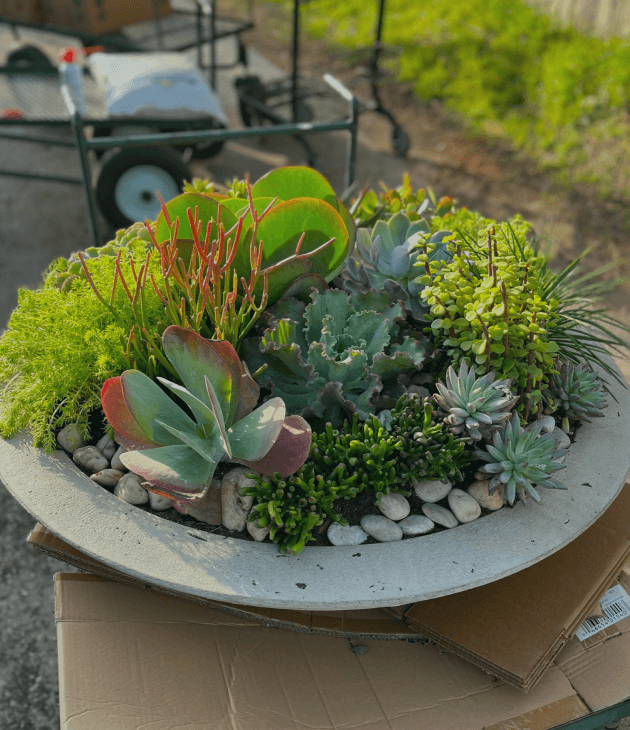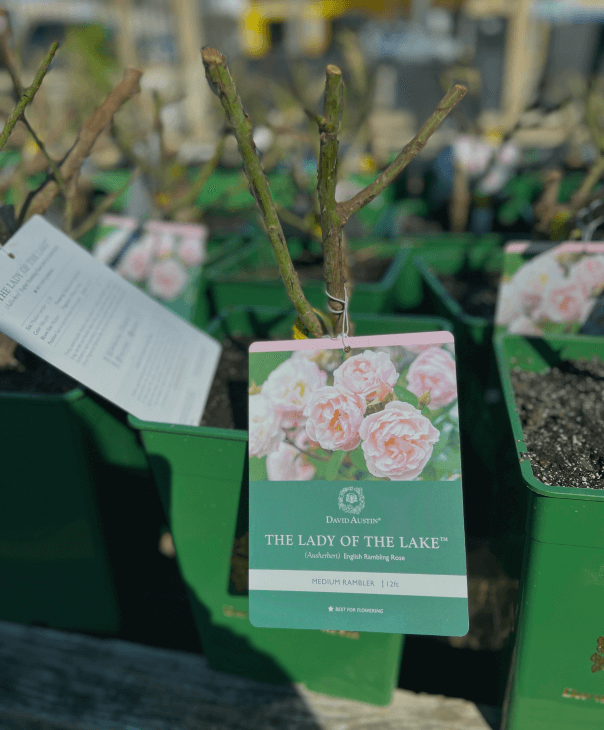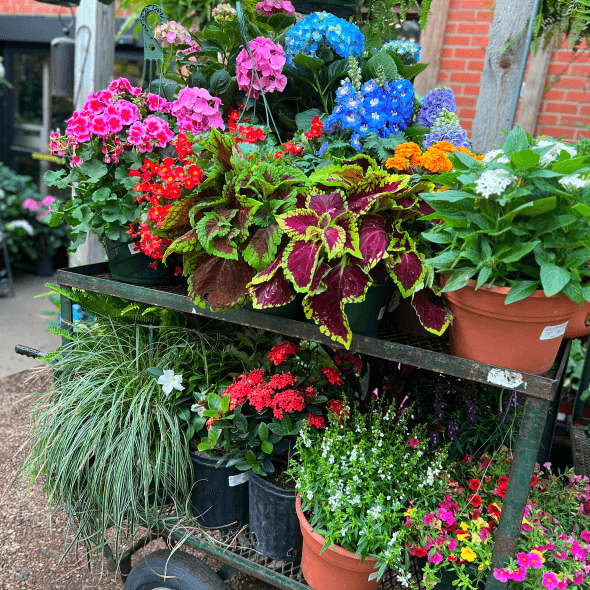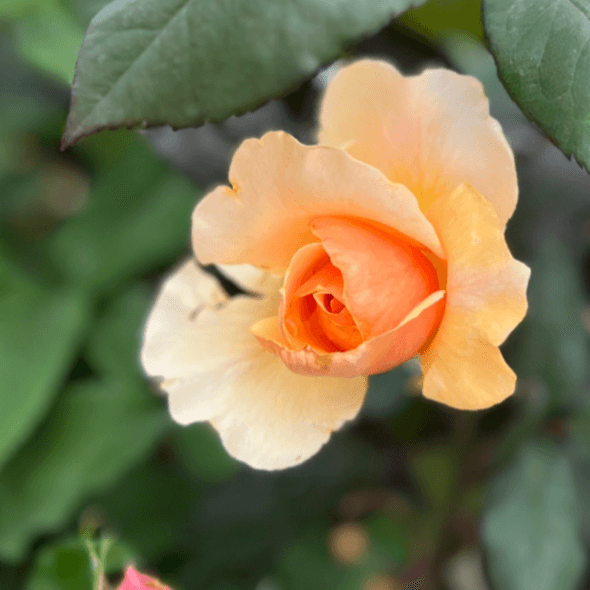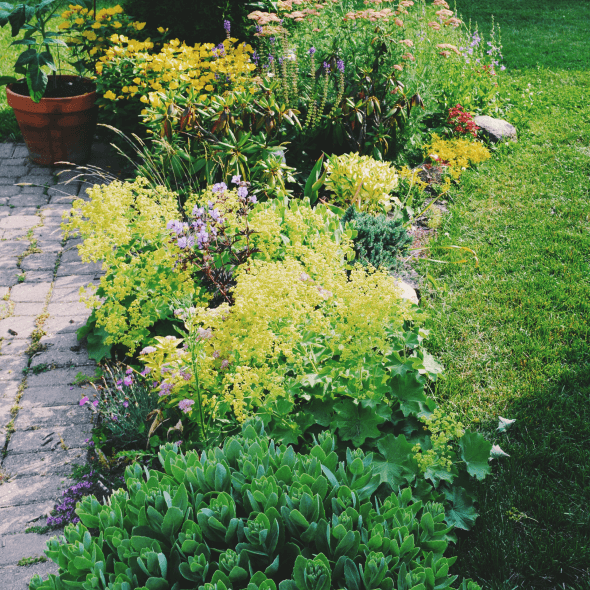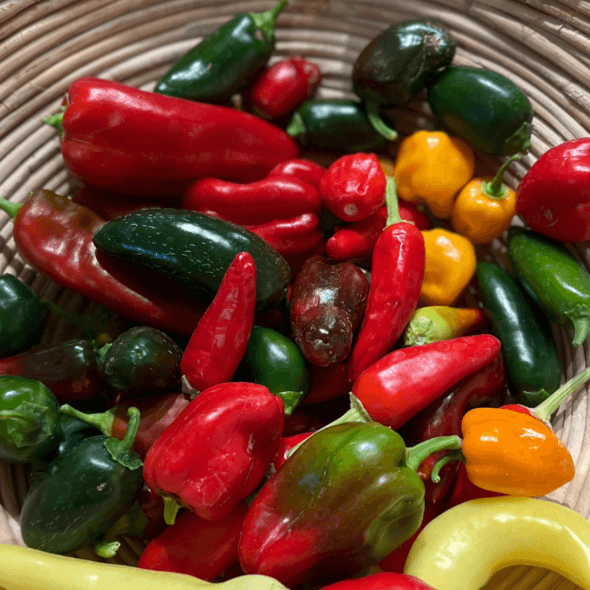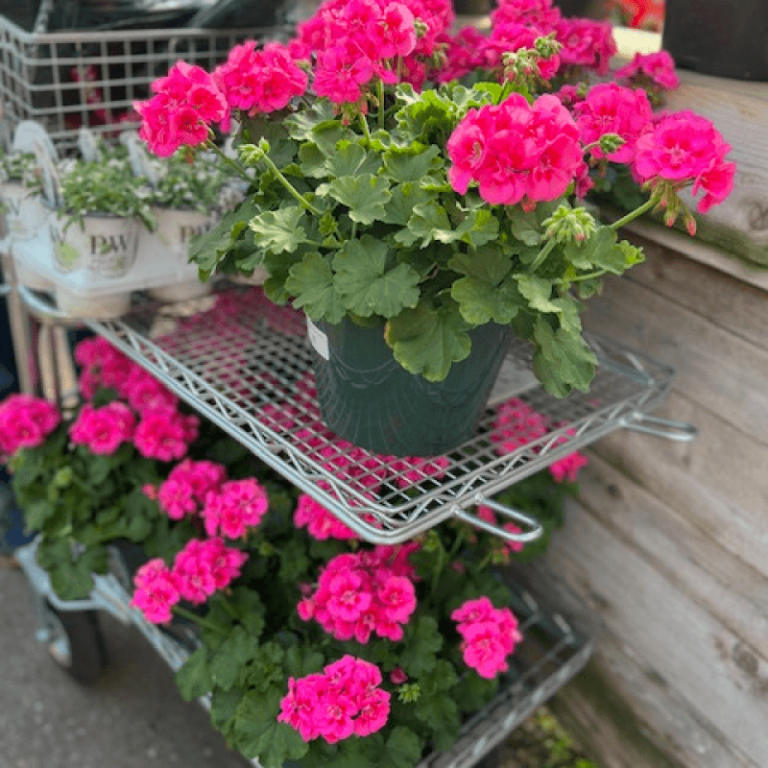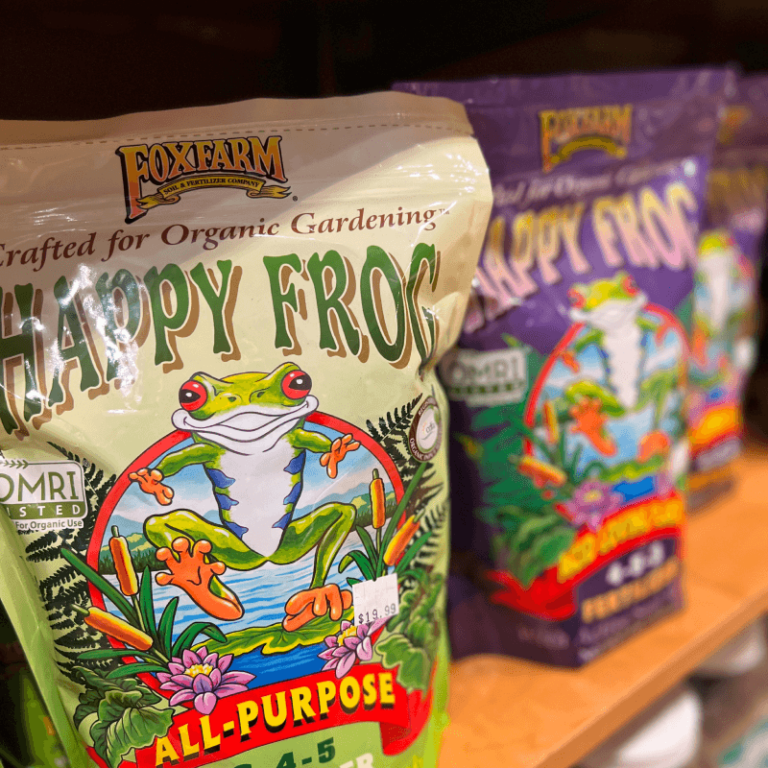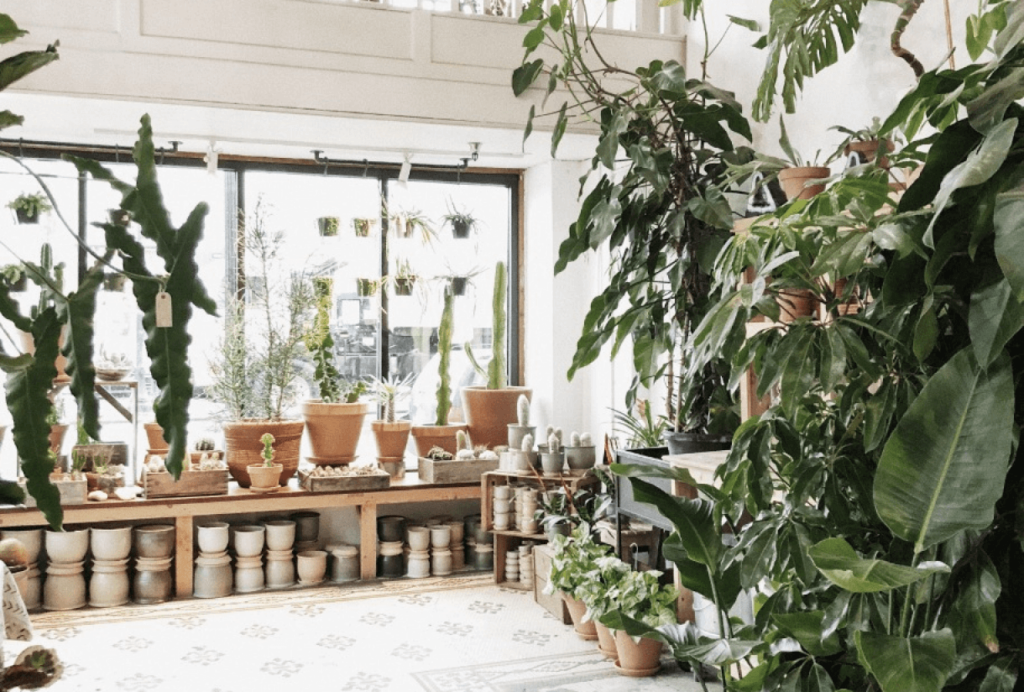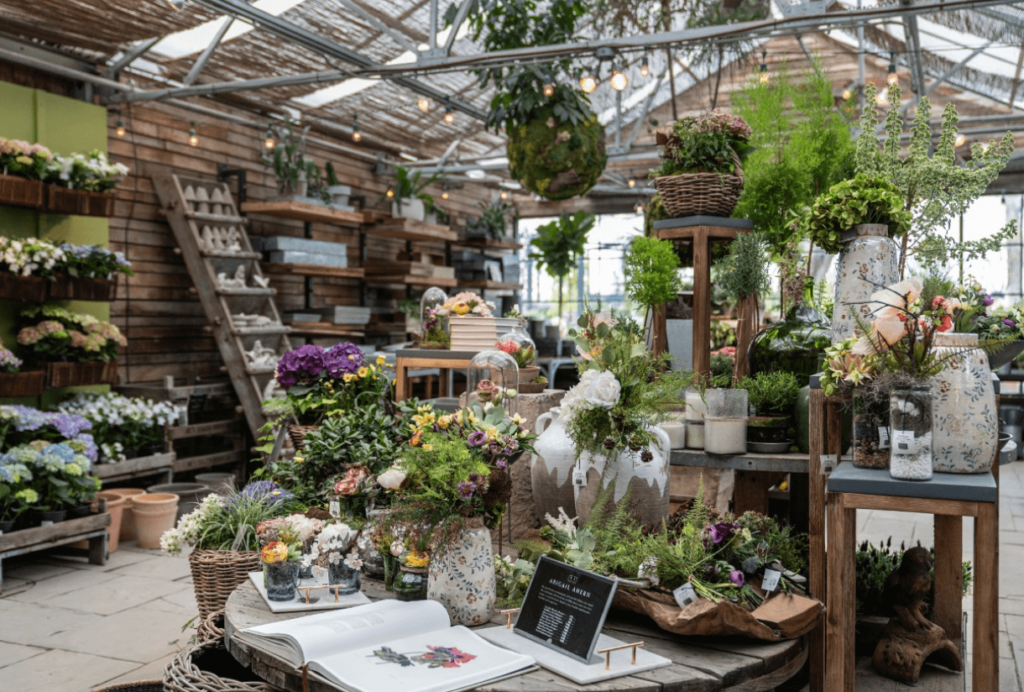Buy good roses. Every book you read about roses will start out by telling you to be sure and buy quality plants. The roses we sell are grown by are grown by a variety of well selected producers. All our plants are #1s.
Types of Roses
Hybrid Teas will grow 4’ to 6’ tall and have the most impressive flowers. Hybrid Teas also are the best for cut flowers as they have longer stem, but tend to have more leaf disease problems such as black spot and powdery mildew.
Grandifloras will grow 5’ to 8’ and have a tendency to be a cross between Hybrid Teas and Floribundas. Grandifloras will produce a flower similar to that of a Hybrid Tea in greater profusion, but often in clusters and not always as large.
Floribundas will grow 2’ to 4’. This is the best rose to be used for landscape planting. They should be planted in groups of the same variety for mass color. Floribundas bloom in clusters, are smaller and are often used as blooming shrubs.
Climbing Roses may only bloom one season (Spring) and not as continuously as the others, but there are many good varieties that repeat their bloom through the seasons. Climbers may grow 8’ to 10’ up to 30’ so choose a variety that fits your space.
Miniatures are roses that can be used for low borders. If grown in containers outside, be sure to protect them when the weather gets below 20 degrees. They are very hardy and usually easy to grow.
Antique Roses will respond with less care. Many varieties are fragrant and all-season blooming. These are roses produced before the 20th century normally.
The best planting season is in January and February before the plants begin to leaf out. However they may be planted any time when in containers. Plant in full sun or on the east side of the house not shaded by trees. Roses must have 6 – 7 hours of sun or more to do their best.
Plant Hybrid Teas and Grandifloras on 4’ – 5’ centers. Plant Floribundas on 2’ – 3’ centers and Miniatures on 2’ centers.
Prepare soil with 3” to 4” of compost worked into the soil to the depth of 10”. Do not cover the bud union. If replacing a rose in an existing bed be sure to replace 2” x 12” of soil with rose soil or new top soil because the old rose puts out a toxin or inhibitor from its roots. The next plant will be stunted if not planted in new topsoil.
Use some type of mulch like shredded bark mulch or cypress mulch. The use of a mulch helps hold moisture, control soil temperatures on our black land soils and controls weed seed germination.
Roses like very little cultivation because their roots are shallow. Always pull weeds rather than cultivate weeds.
Roses do require very definite care to be really beautiful, however, the care is not as critical in the hot summer as it is for other plants.
Feed your roses every 4 weeks starting with the 1st week in March and the last feeding in mid-September. You can use Fertilome Rose food or Fertilome Rose Food with Systemic. The systemic will control insects but not control disease which is the most common problem.
Spraying your roses is the most important practice in rose culture. Black spot and powdery mildew are the most common problems in Dallas. Control of black spot is best done weekly with Ortho Funginex or Benomyl sprays. If powdery mildew becomes a problem use Fungaway. If you fertilize with Fertilome Systemic Rose food, most insects will not be a problem. If insects like budworms, aphids or thrips become a problem, use Orthene. If you do not use a systemic rose food, then use Orthenex which is a combination fungicide/insecticide every other spraying. If spider mites are a problem use Kelthane. It is best to use a pump-up sprayer. Never leave chemicals in the sprayer. You can cut back spraying when the hot summer arrives. However, if your rose garden receives watering from overhead then continue spraying more frequently. Overhead watering of roses will create more fungal leaf problems. The very best watering system is with drip irrigation.
There are two types of pruning; removing the flowers (deadheading) and once a year a hard pruning around February 15th.
For best results remove all old flowers and cut at the first leaf of five leaflets on the stem.
February 15 pruning depends on the variety of rose. First, remove all weak and dead twigs. On Hybrid Teas and Grandifloras cut the strong canes at 16” – 22” above the bud union. Remember any cane below the bud union should be removed immediately. Always cut just above a node (bud) that faces away from the center of the plant. Floribundas and Miniatures should only have half of the total growth removed.
Climbing roses should have only one quarter or less of the total growth removed as soon as they complete their blooming season. Hard winter pruning would remove all the flowering wood for the season. Antiques have different pruning needs, so be sure to ask at the time of purchase.
Keep your roses well watered all season. An average of 1” measurable precipitation per week should be sufficient.




